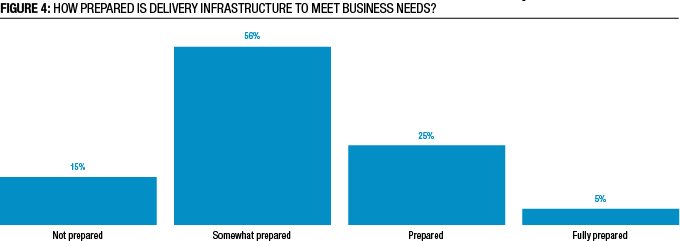 Among the nuggets of accepted wisdom about corporate learning, these three are near the top: Compliance training is a low value but necessary task. Classroom training is going the way of the dodo. Learners hold the power in the new learning environment.
Among the nuggets of accepted wisdom about corporate learning, these three are near the top: Compliance training is a low value but necessary task. Classroom training is going the way of the dodo. Learners hold the power in the new learning environment.
The reality is far more complicated, according to a survey of the Chief Learning Officer Business Intelligence Board. The Business Intelligence Board is a group of 1,500 professionals in the learning and development industry who have agreed to be surveyed by the Human Capital Media Research and Advisory Group, the research and advisory arm of Chief Learning Officer magazine. This survey was conducted in June 2018.
Let’s start with that third assumption: Learners hold the cards in the new business environment. The vast array of free, high quality learning resources and sophisticated tools to access and consume them mean control has shifted from traditional arbiters of expertise like instructors and centralized learning departments. Learning on demand at the point of need has given learners control of their education.
Not so fast, at least when it comes to how decisions get made in corporate learning. The reality is less than a quarter of companies actually involve employees in deciding how learning gets delivered. Not even CLOs hold the keys (Figure 1). Just 4 in 10 Business Intelligence Board members report that CLOs are involved.
Given the nature of CLO jobs, that finding is not surprising. Many learning executives, particularly in midsized or large enterprises, spend their energy developing strategy, measuring effectiveness and managing stakeholder relationships rather than focusing on delivery methods. Frontline learning professionals such as instructional designers are more influential (43 percent).
So who holds the ultimate power to determine how learning gets delivered? Senior leadership and business line leaders (71 percent and 52 percent, respectively) are most influential. Money talks when it comes to decision time and these leaders hold the organizational purse strings.

Onto the second assumption, that traditional classroom-based instructor-led training is on the wane. Again, the data paint a different picture (Figure 2). Classroom-based ILT remains the most used learning delivery method for many skill areas. More than half of learning departments use classroom-based ILT for leadership development (67 percent), business skills training (65 percent), onboarding and new hire training (62 percent), developing core competencies (51 percent) and technical skill development (53 percent).
These figures are actually slightly up in all those areas year over year. That is despite nearly one-quarter of CLOs indicating in the same survey last year that they plan to decrease their usage of classroom-based ILT. The lone area where classroom-based ILT isn’t used by a majority of organizations is compliance training.
 That brings us to the third assumption about learning: Compliance training is a low-value activity organizations engage in as a check-the-box activity.
That brings us to the third assumption about learning: Compliance training is a low-value activity organizations engage in as a check-the-box activity.
Here the data appear to back up the assumption. According to survey respondents, 84 percent deliver compliance training via self-paced or instructor-led e-learning. That finding bears further study as companies respond to the #MeToo movement and other corporate scandals. Compulsory training has the potential to be more impactful and meaningful on compliance topics such as safety, sexual harassment and business ethics.
Despite what the data indicates, as CLOs look ahead they see a future where classroom-based ILT continues to decline in importance (Figure 3). Among the areas where CLOs expect to decrease usage, classroom-based ILT is expected to see the largest decrease (28 percent). The only other significant decrease expected is in text-based training (19 percent). Coaching and mentoring is expected to increase.
Bear this in mind as you look at those expectations: Last year one quarter of CLOs expected to decrease their use of classroom training when in fact this year’s data showed an increase. Reality doesn’t always match expectations when it comes to learning delivery.















